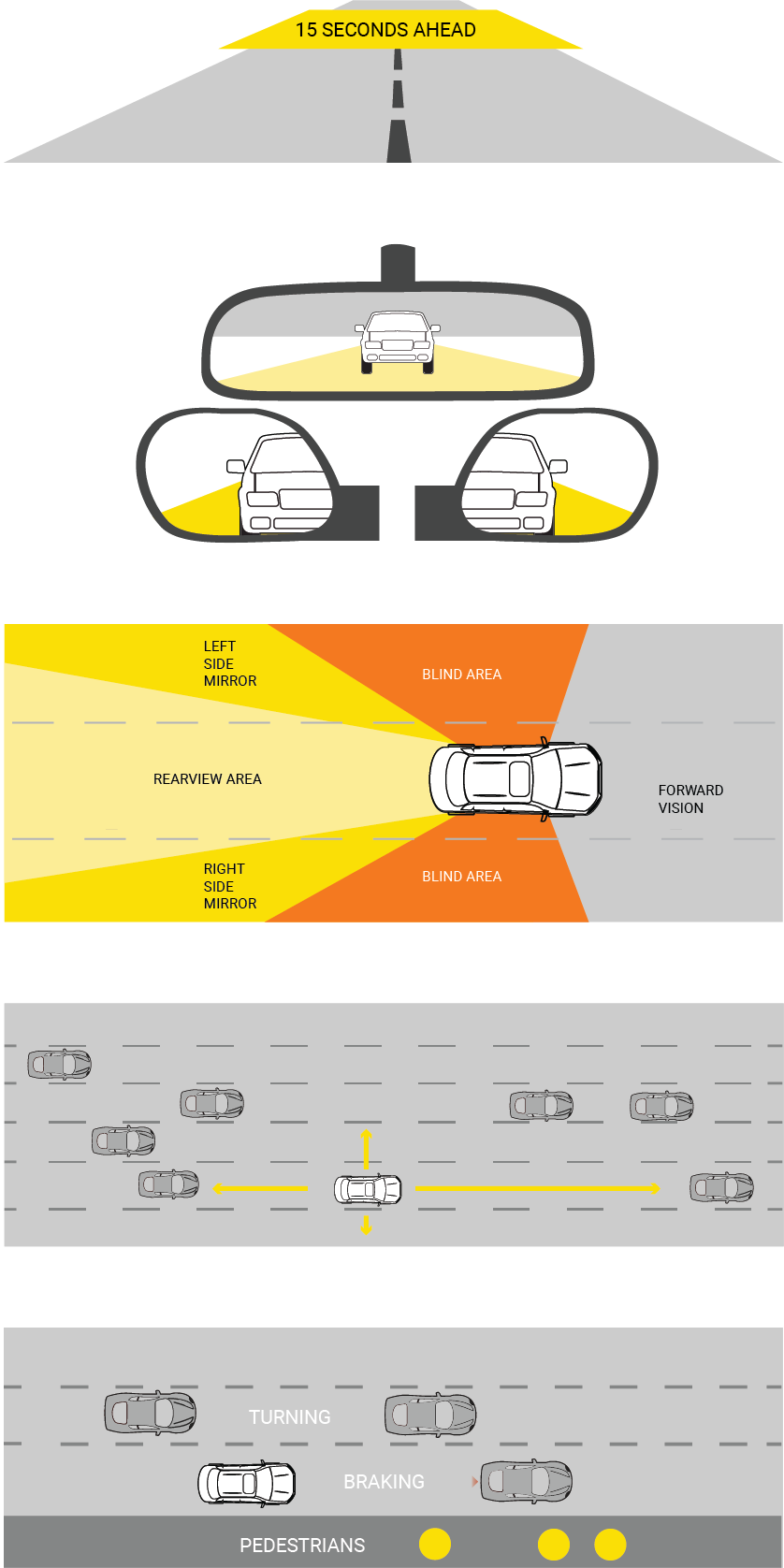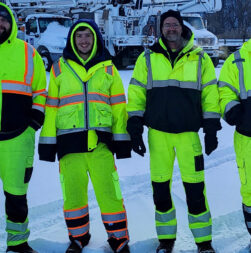Driving may seem simple to the experienced motorist, but it requires constant observation and focus to keep you and your passengers safe. Whether you’re driving to a familiar location or setting out for a new destination, driving conditions are unpredictable. Each time you drive, you encounter unexpected road conditions, changing weather, and even new drivers around you.
A study from the National Highway Traffic Safety Administration found that in 94% of major accidents, motorist mistakes were to blame. The environment caused only 2% of accidents, 2% were caused by vehicle issues, and 2% were attributed to “unknown” causes. This means that human error is common, but it can be decreased, or even eliminated, with a few adjustments to your driving style.
Smith System‘s driver training is an innovative program designed to reduce collisions. Two thousand companies across the globe have been trained with the Smith System, including Flagger Force. All Flagger Force employees must complete Smith Driving training, both in the office and out in the field. As part of their safety training, this helps employees avoid potential hazards, react to changing conditions, and reduce risks when on the road. Below are some interesting facts to keep in mind while traveling.
THE SMITH DRIVING SYSTEM’S 5 KEYS TO SAFETY
Aim High in Steering
Remember to aim high to keep your focus point well ahead of your vehicle. This extended view of the road will alert you to the traffic ahead and any upcoming dangers. Having a longer eye lead also increases your evaluation time and your range of vision. Because you are paying attention to the area far ahead of your vehicle, it also helps you to avoid rear-end collisions.
A driver should align their attention high enough so they can view the road as a whole and not just a few feet ahead. Eye lead, or how far forward you’re looking while driving, should extend to the distance you’ll travel in the next 15 seconds, as shown in this graphic.
Get the Big Picture
Aiming high will help you stay more aware of what’s in front of you. To recognize the cars beside and behind you, use your rearview mirror and side mirrors to help you maintain 360-degree awareness. By checking your mirrors every 5 to 8 seconds, you greatly diminish the visual barriers that may mask the dangers of distracted, angry, or even impaired motorists.
Keep Your Eyes Moving
The third standard of the Smith System is to remain alert. The combination of a static line of sight and the repetitive motion while driving often sends drivers into “a trance”. One way to prevent this dangerous condition is to keep surveying all parts of the road by moving your eyes consistently. Avoid focusing on objects for more than two seconds. By combining road recognition with constant eye movement, you will stay awake, aware, and able to recognize signs of hazards on the road.
Leave Yourself an Out
The fourth principle of the Smith System is to create an escape route for every situation. As you drive, work to make sure that other drivers don’t box you in between vehicles. When you give yourself room to anticipate hazards, you’re much less likely to get into an accident that is the result of others’ careless behaviors. One of the smartest ways to leave yourself an out is to maintain a cushion of distance. Make sure extra space surrounds your vehicle. This extra space will give you more time to react and the ability to anticipate the actions of other drivers.
Make Sure They See You
Don’t assume that the other motorists see you, are alert, or even that great at driving. Seek eye contact with other motorists in intersections, and always use the proper warning devices that may include signals and horn honking at the appropriate times. The key to safe driving is clear communication.
The Smith Five Keys are a safety guideline that provides helpful techniques for all kinds of driving conditions. When you follow these five keys, you have more control over your environment to avoid potential hazards. As the roads get busier, keep these useful safety keys from the Smith System Driver Improvement Institute in mind.
Want Even More Safe Driving Tips?
- Make sure your vehicle is in proper working condition. Perform a circle of safety, or 360° inspection of your car before and after enter your vehicle. Check to see if anything is out of place, check for dings, check to see if your headlights are working, and make sure that your tires aren’t low.
- Allow for weather. Check the weather forecast before you leave for your trip. Add travel time onto your trip if you are driving in rain or snow. Make sure your vehicle’s wipers are functioning. Check to see if you have the proper wiper fluid in for summer or winter. During the winter, check snow tires or make sure you have scrapers. Make sure your fog lights are working.
- Take a break. Don’t run your vehicle for extended periods. If you’re traveling long distances, be sure to take pit stops along the way. Not only will this help your engine rest, but it will also give you breaks that will keep you alert.
- Be prepared. Pack a to-go bag that includes bottled water, food, necessary medicine, flashlights, blankets, and an emergency power supply. Don’t let your gas tank get too low, in case you get stuck in weather or traffic for prolonged periods.
- Review Your Route. Think about the roads you’ll be traveling, and the conditions in your destination. What is the environment like? How close is the nearest gas station? Are there any major work zones in the area? It’s smart to do a little research on your route before heading out. You’ll gain a better perspective on your destination and travel path—and you may even find a new town to explore along your route.
By following this safe driving advice, you’ll be better prepared for the unexpected and better equipped to tackle those summer travel plans. No matter where you’re traveling, get there safely.





